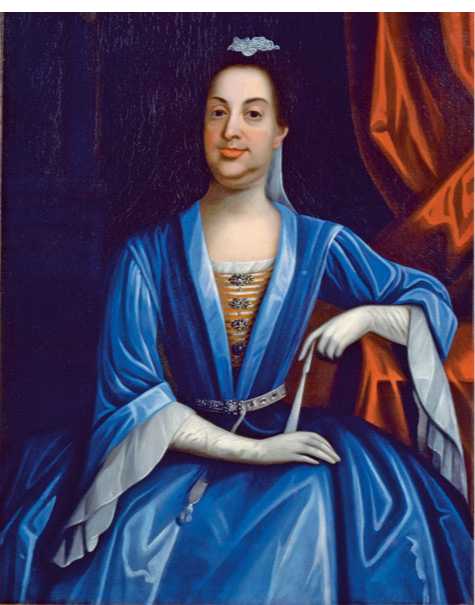New York, New Jersey, Pennsylvania, and Delaware owe their collective name, the Middle Colonies, to geography. Sandwiched between New England and the Chesapeake region, they often receive only passing notice in accounts of colonial America. The lack

This painting is presumably of Lord Cornbury, the royal governor of New York and New Jersey in the early 1700s, in a dress. Why it was painted and by whom is unknown. Some regard the painting as proof that the eighteenth century tolerated a wide range of sexual behaviors. In The Lord Cornbury Scandal (1998), however, Patricia Bonomi views the painting as part of a plot to unseat a brusque and high-handed governor. Some of his enemies in the colonies dispatched letters to officials in London complaining of Cornbury's penchant for wearing women's clothing in public. Bonomi doubts that the charges were true. Source: Portrait of an Unidentified Woman (Formely Edward Hyde, Viscount Cornbury), 18th century. Collection of The New-York Historical Society.
Of a distinctive institution, such as slavery or the town meeting, explains part of this neglect.
Actually, both institutions existed there. Black slaves made up about 10 percent of the population; indeed, one New York county in the 1740s had proportionally more blacks than large sections of Virginia. And eastern Long Island was settled by people from Connecticut who brought the town meeting system with them.
This quality of “in-betweenness” extended to other economic and social arrangements. Like colonists elsewhere, most Middle Colonists became farmers. But where northern farmers concentrated on producing crops for local consumption and Southerners for export, Middle Colony farmers did both. In addition to raising foodstuffs and keeping livestock, they grew wheat, which the thin soil and shorter growing season of New England did not permit but for which there existed an expanding market in the densely settled Caribbean sugar islands.
Social arrangements differed more in degree than in kind from those in other colonies. Unlike New England settlers, who clustered together in agricultural villages, families in the Hudson Valley of New York and in southeastern Pennsylvania lived on the land they cultivated, often as spatially dispersed as the tobacco planters of the Chesapeake. In contrast with Virginia and Maryland, however, substantial numbers congregated in the seaport centers of New York City and Philadelphia. They also settled interior towns like Albany, an important center of the fur trade on the upper Hudson, and Germantown, an “urban village” northwest of Philadelphia where many people were engaged in trades like weaving and tailoring and flour milling.




 World History
World History



![The General Who Never Lost a Battle [History of the Second World War 29]](https://www.worldhistory.biz/uploads/posts/2015-05/1432581983_1425486253_part-29.jpeg)





